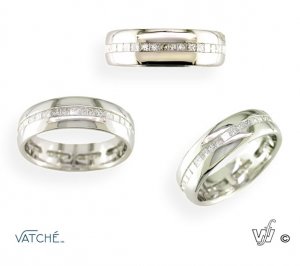njc
Brilliant_Rock
- Joined
- Sep 10, 2004
- Messages
- 1,997
1. HDTV - High Definition TV
2. EDTV - Enhanced Digital TV
3. DLP - Digital Light Processing (a type of projection technology)
4. LCD - Liquid Crystal Display, TVs and computer monitors
5. CRT - Cathode Ray Tube, its your regular old television, computer monitors
6. Plasma – Yes, its in your blood, but its also a type of TV
7. Flat and why it is good depends on what you are describing. Flat screen is just that. There is no bow to it when it gets to the edges (CRTs do this) so the picture is not distorted—that’s a good thing. Flat panel refers to the entire TV being a flat unit. A plasma TV is the best example of this, they are usually hung on a wall like a picture they are so thin—this being a good thing is a personal opinion, I think it’s a little too Jetson-y.
8. A TV is just a TV, but these other systems are capable of displaying at a higher resolution which produces a better picture (clearer, more details, better color). Heres a real world example: Have you ever printed something off of your computer and it was really blurry, but it looks great on the screen? That’s a difference of resolution (screen is 72 Dot Per Inch, print is 300 dpi). The bigger something is, the more information/color/dots you want filling up that space, the higher the resolution your TV will accept, the better the picture will look.
2. EDTV - Enhanced Digital TV
3. DLP - Digital Light Processing (a type of projection technology)
4. LCD - Liquid Crystal Display, TVs and computer monitors
5. CRT - Cathode Ray Tube, its your regular old television, computer monitors
6. Plasma – Yes, its in your blood, but its also a type of TV
7. Flat and why it is good depends on what you are describing. Flat screen is just that. There is no bow to it when it gets to the edges (CRTs do this) so the picture is not distorted—that’s a good thing. Flat panel refers to the entire TV being a flat unit. A plasma TV is the best example of this, they are usually hung on a wall like a picture they are so thin—this being a good thing is a personal opinion, I think it’s a little too Jetson-y.
8. A TV is just a TV, but these other systems are capable of displaying at a higher resolution which produces a better picture (clearer, more details, better color). Heres a real world example: Have you ever printed something off of your computer and it was really blurry, but it looks great on the screen? That’s a difference of resolution (screen is 72 Dot Per Inch, print is 300 dpi). The bigger something is, the more information/color/dots you want filling up that space, the higher the resolution your TV will accept, the better the picture will look.
Widescreen is another good term to know. It refers to the screen ratio and how much of the picture fills up the screen. Widescreen is like the large screens at the movies and so is more rectangular than square. Ever watch a movie in widescreen mode and get those black bars on the top and bottom? What you actually watch ends up being smaller than what your screen is capable of displaying, but you see more of the scene. With a widescreen TV, the whole thing is filled up, no need for the black bars.
This link has a GREAT over view of TV technology. And this one explains widescreen better.











300x240.png)